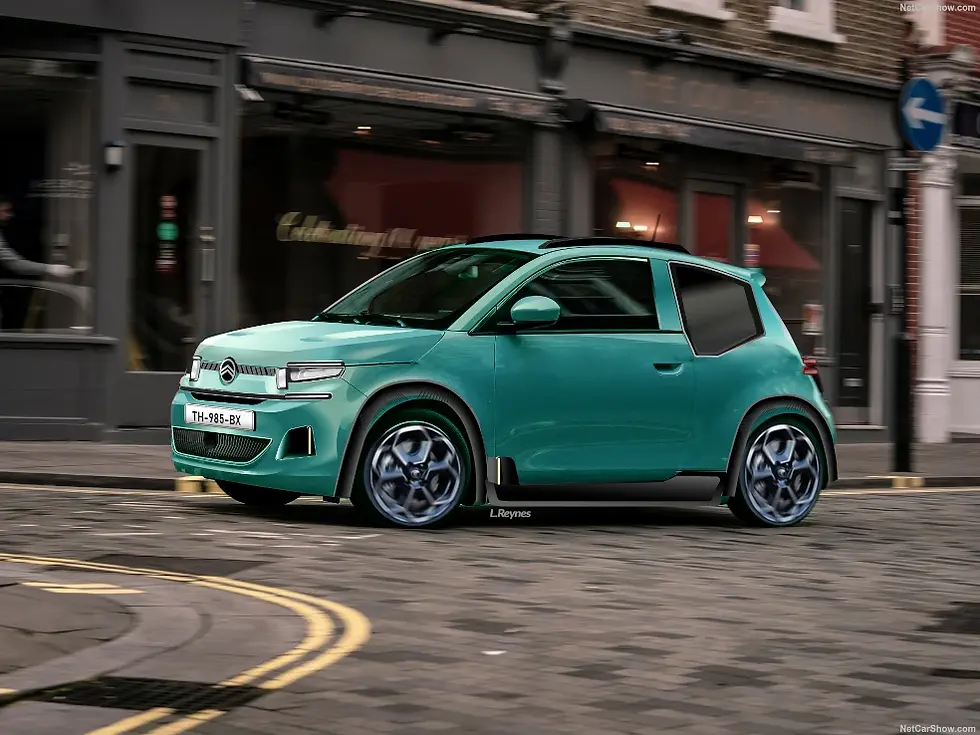Citroën C2: Can it be reborn thanks to Stellantis and Fiat?
- Jérémy

- Aug 2
- 4 min read

The A-segment, home to small city cars, appears to be experiencing a period of decline, with many manufacturers stepping away. The reason often cited is the same: insufficient profitability when faced with development and regulatory compliance costs, particularly environmental standards. Nevertheless, these agile and economical vehicles meet a genuine need for urban and suburban mobility. Citroën, a historic player in this segment with popular models like the Saxo, C2, and later the C1 (developed in partnership with Toyota and Peugeot), eventually exited this arena. This departure left a void for fans of the "chevrons" seeking an ultra-compact and accessible solution. However, Citroën's integration into the Stellantis group, alongside brands like Fiat, opens up new possibilities. The idea of a new Citroën C2, cleverly designed on a proven technical base, might not be so far-fetched and could represent a strategic opportunity for the brand.
Filling a strategic gap in the Citroën lineup
Citroën has recently redefined its range strategy, emphasizing accessibility and "design that matters." The electric ë-C3, with its aggressive pricing, and the internal combustion C3 starting around €15,700 (excluding promotions), demonstrate this commitment to offering vehicles at the right price. We also must not forget the Ami mobility solution, available from €8,000, which, although not a car in the traditional sense, addresses micro-mobility needs. Despite this, a space remains between the very specific Ami and the more versatile, but also larger, C3. A new Citroën C2 would naturally find its place here. By leveraging an existing platform within Stellantis, such as that of the iconic Fiat 500, Citroën could develop such a city car at a lower cost. This sharing of components would not only reduce initial investment but also optimize the use of production capacities. One thinks particularly of the Mirafiori plant in Italy, Fiat's historic site, which has experienced periods of partial unemployment recently. Adding a new model sharing its underpinnings with the 500 could help increase volumes and secure employment, a logic of industrial synergy dear to Stellantis.
A design approach true to Citroën's DNA on a familiar base
To envision what this new Citroën C2 might look like, our proposal is based on the extensive use of the Fiat 500 as a starting point, while grafting Citroën's current stylistic identity onto it. The objective would be to retain as many structural elements of the Fiat 500's body as possible to control costs, including the doors and roofline. Modifications would focus on specific body panels. A distinct nod to the past would be the integration of the famous quarter-panel kink, so characteristic of the original C2 launched in 2003, at the rear wings. This strong visual signature would immediately anchor the new model in the Citroën lineage. For the front end, inspiration would come directly from the Oli concept car and the new C3. Thus, we would find the new light signature with three vertical and horizontal bars, framing sleekly designed headlamps. These optics would be connected by a striated black grille, integrating the brand's new chevrons at its center, affirming its membership in the Citroën family. The interior, though not detailed here, should logically draw inspiration from the brand's cherished principles of simplicity, comfort, and ingenuity, using sustainable materials and practical solutions.
<h3>Market Potential Despite Economic Challenges</h3>
This proposal for a new Citroën C2, as appealing as it may be on paper, must naturally be confronted with economic reality. The Fiat 500 platform, particularly in its electric 500e version, is known to be relatively expensive. Positioning a vehicle derived from this base at an attractive price point, situated between the Ami and the entry-level C3, would represent a considerable challenge for Citroën's product teams. Significant economies of scale would need to be achieved, and perhaps a thermal or mild-hybrid version considered to reach a competitive entry price. However, the example of the Toyota Aygo X demonstrates that a viable market still exists for small city cars with assertive designs and good positioning. With nearly 30,000 units sold in Europe by the end of April in a given year, the Japanese model proves that the A-segment is not dead. Faced with this success and considering the existence of a suitable technical base within Stellantis with the Fiat 500, Citroën would be well-advised to seriously explore the path of a new C2. It would not only enrich its offering in a crucial entry-level segment for attracting new customers but also rekindle the flame of a name that still evokes fond memories for many motorists. Such an approach, combining industrial pragmatism and stylistic audacity, would be entirely in keeping with the spirit of innovation and accessibility that characterizes Citroën.
In conclusion, while the economic equation remains complex, the opportunity for Citroën to re-enter the small city car segment with a renewed C2 is very real. Such a car, capitalizing on the brand's heritage and Stellantis' synergies, could find an audience seeking urban mobility that is chic, practical, and affordable. The future will tell if Citroën dares to take on this exciting challenge.






Comments